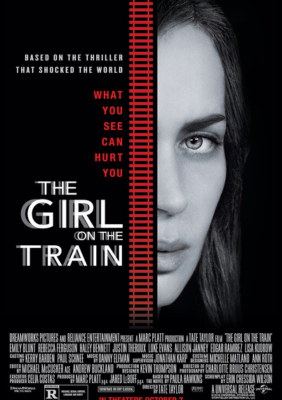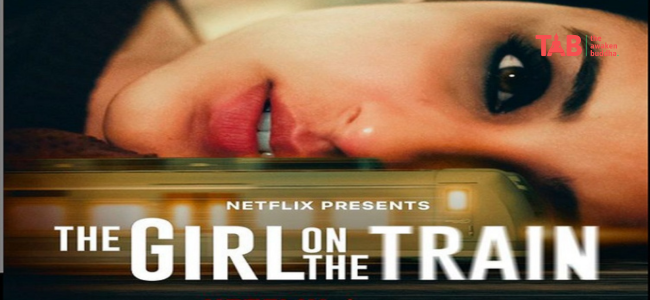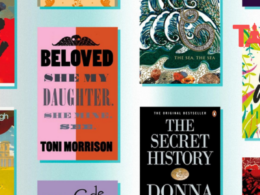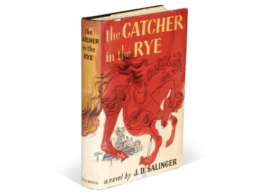Outline of the Article
1. Plot Summary
2. Main Characters
3. Setting
4. Themes
5. Writing Style
6. Critical Reception
7. Comparisons
8. Book vs. Movie
9. Impact on Popularity
10. Psychological Thriller Genre
11. Character Analysis
12. Subverting Expectations
13. Symbolism
Introduction

The psychological thriller genre has captivated readers and moviegoers alike with its intense narratives and unexpected twists. A notable addition to this genre is “The Girl on the Train.” This article will explore the intricate storyline, engaging characters, and thought-provoking themes that make this novel a must-read for thriller enthusiasts.
1. Plot Summary
“The Girl on the Train” follows the turbulent life of Rachel Watson, a troubled alcoholic who commutes by train daily, observing the lives of the people in the houses she passes. One day, Rachel becomes entangled in a missing person investigation when she witnesses something unsettling during her train journey. As the story unfolds, Rachel’s troubled past intertwines with the mystery, leading to shocking revelations and a thrilling climax.
2. Main Characters
The novel revolves around three primary characters: Rachel Watson, Megan Hipwell, and Anna Watson. Rachel, the unreliable narrator, struggles with alcoholism and the aftermath of a failed marriage. Megan, the woman Rachel observes on the train, becomes the focus of Rachel’s obsession. Anna, Rachel’s ex-husband’s new wife, adds another layer of complexity to the narrative.
3. Setting
Set in the suburbs of London, “The Girl on the Train” takes readers on a voyeuristic journey through the seemingly ordinary lives of its characters. The train is a symbolic conduit between Rachel’s reality and the lives she enviously observes, highlighting the stark contrast between appearances and hidden truths.
4. Themes
One of the prominent themes explored in the novel is the unreliability of memory. Rachel’s alcohol-induced blackouts and her struggle to piece together her memories raise questions about the accuracy of her observations and the truthfulness of her perception. Trust, betrayal, and the consequences of secrets are recurring themes that add depth to the narrative.
5. Writing Style
Author Paula Hawkins masterfully employs a multi-perspective narrative, alternating between the viewpoints of Rachel, Megan, and Anna. This approach provides different insights into the events and adds suspense and intrigue. Hawkins’ vivid descriptions and expert pacing contribute to the book’s gripping nature, ensuring readers are hooked from start to finish.
6. Critical Reception
Upon its release, “The Girl on the Train” garnered widespread acclaim from critics and readers alike. Hawkins’ skillful storytelling and ability to create complex and flawed characters were praised. The novel’s ability to keep readers guessing and its intricate plot twists were also lauded.
7. Comparisons
Inevitably, comparisons between “The Girl on the Train” and other psychological thrillers arise. While sharing similarities with Gillian Flynn’s “Gone Girl” regarding unreliable narrators and unexpected plot twists, Hawkins’ work stands on its own, offering a unique perspective and storyline that sets it apart.
8. Book vs. Movie
“The Girl on the Train” was adapted into a 2016 movie starring Emily Blunt as Rachel Watson. While the film captured the novel’s essence, there are inevitable differences between the two mediums. Exploring these variations can provide an interesting analysis of how a story translates from page to screen.
9. Impact on Popularity
“The Girl on the Train” played a significant role in popular culture’s resurgence of psychological thrillers. Its success paved the way for other novels in the genre to find wider audiences, making psychological thrillers one of the most sought-after genres in the literary world.
10. Psychological Thriller Genre
“The Girl on the Train” epitomizes the psychological thriller genre, which delves into the depths of the human psyche and explores the darker aspects of human behavior. This genre continues to captivate readers with its ability to keep them on the edge of their seats and challenge their perception of reality.
11 . Character Analysis
All character in “The Girl on the Train” is intricately developed, with their flaws and motivations driving the narrative forward. Analyzing their actions, relationships, and psychological states provides valuable insights into the story’s complexities.
12. Subverting Expectations
One of the strengths of “The Girl on the Train” is its ability to subvert readers’ expectations. The story turns unexpectedly when one believes they have uncovered the truth. This skillful manipulation of anticipation and surprise keeps readers entertained and eager to uncover the next twist.
13. Symbolism
Throughout the novel, various symbols are employed to enhance the storytelling. The train is a metaphor for Rachel’s life, constantly moving forward but never reaching a destination. Other symbolic elements, such as the houses and the tangled web of relationships, contribute to the novel’s deeper layers of meaning.
Conclusion
“The Girl on the Train” is an exciting psychological thriller that immerses readers in a world of mystery, intrigue, and complex characters. Paula Hawkins’s masterful storytelling and suspenseful ability make this novel compelling and unforgettable. Whether you are a fan of the psychological thriller genre or enjoy a thought-provoking page-turner, “The Girl on the Train” will satisfy your cravings for suspenseful storytelling.
FAQs
1. Is “The Girl on the Train” a standalone novel or part of a series?
“The Girl on the Train” is a standalone novel, meaning it can be enjoyed independently without reading any additional books.
2. Are there any other books by Paula Hawkins?
Yes, Paula Hawkins has written other novels, including “Into the Water” and “A Slow Fire Burning,” which also fall within the thriller genre.
3. Is the movie adaptation faithful to the book?
While the movie adaptation captures the novel’s essence, the two have minor differences. Both offer unique experiences and can be enjoyed separately.
4. What are some similar books in the psychological thriller genre?
If you enjoyed “The Girl on the Train,” you might also enjoy books such as Gillian Flynn’s “Gone Girl,” A.J. Finn’s “The Woman in the Window,” and B.A. Paris’ “Behind Closed Doors.”
5. Is “The Girl on the Train” suitable for all readers?
Due to its mature articles and occasional violence, “The Girl on the Train” is recommended for adult readers or those comfortable with intense psychological narratives.










